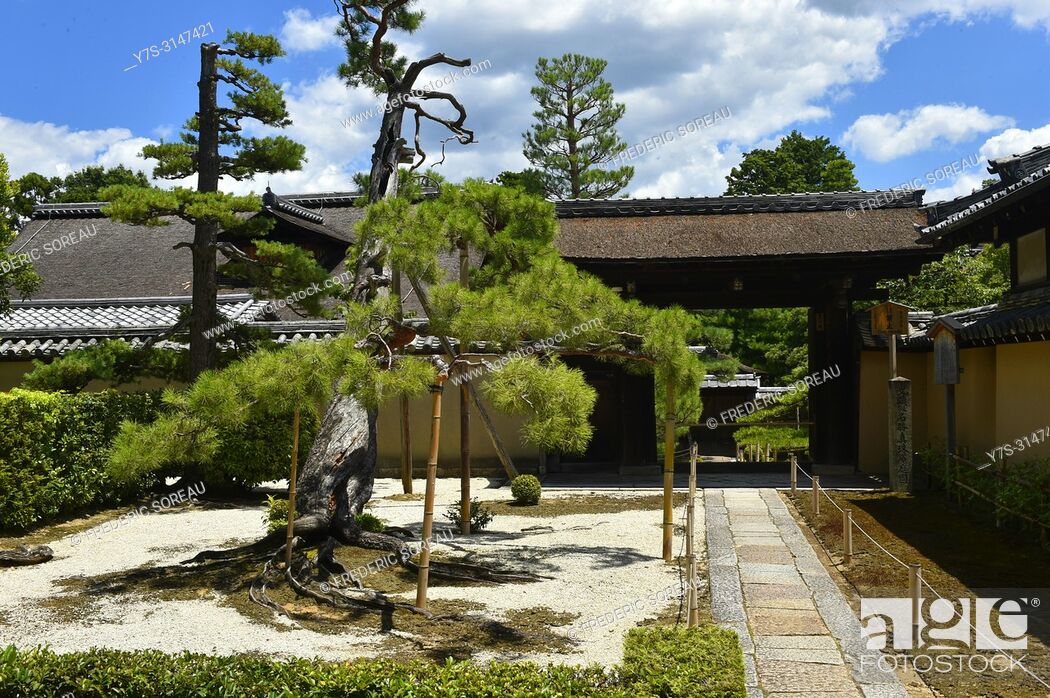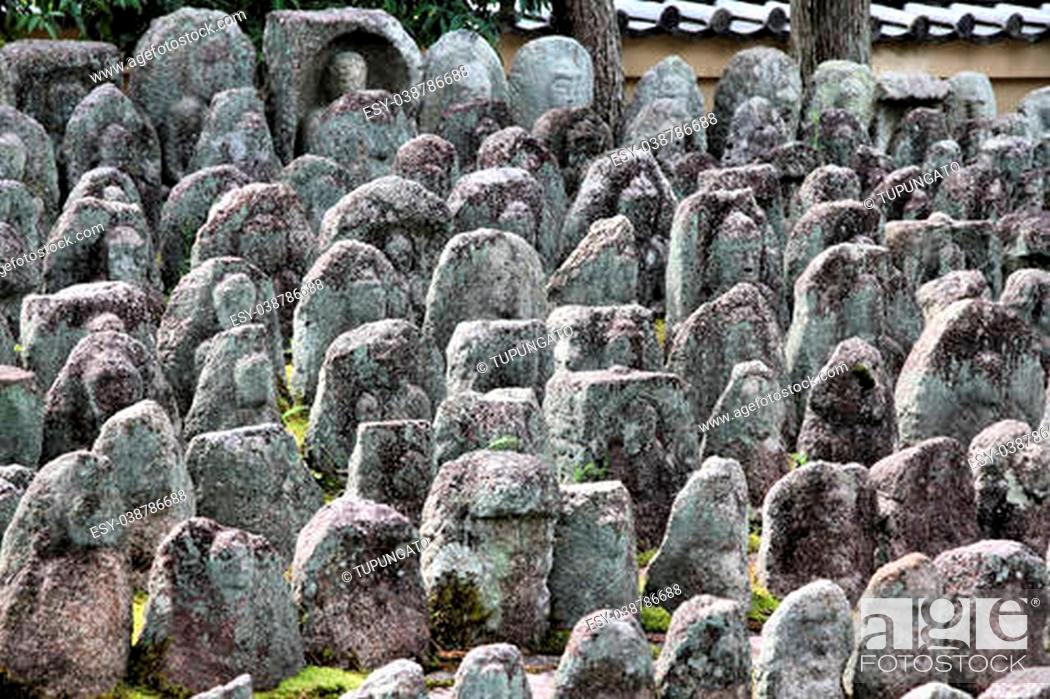For great shojin ryori, look no further than Daitokuji Ikkyu. This Zen temple vegetarian restaurant is the oldest existing one of its kind in Kyoto – it’s over 500 years old!
Compared to other cities in Japan, Kyoto has a relatively greater number of vegetarian-friendly restaurants to choose from. Plus, there are some excellent shojin ryori (Buddhist temple vegetarian cuisine) places in town, which serve exquisitely prepared multi-course vegetarian meals. Who said that fine dining was only for omnivores here? One of our favourite restaurants in town is Daitokuji Ikkyu, located just outside the eponymous Daitokuji Temple.
At Daitokuji Ikkyu, you’ll eat your way through the seasons, especially the possibilities inherent in plant and soy. You might have fresh gluten simmered in soy sauce, pickled turnip rolls with wasabi, a canola blossom salad tossed in a creamy mustard-spiked tofu dressing, vegetarian chawanmushi, or sesame tofu made with arrowroot and sesame. Their pickles deserve special mention! With the endless variety in tastes and texture, vegetarian eating has never been so vibrant and interesting.
Though most shojin ryori restaurants are lunch-only affairs, Daitokuji Ikkyu is one of the few that does a dinner service. This is great if you are, for example, vegan but looking for a special multi-course meal in the evening to finish your day, rather than at lunch. The dinner service is correspondingly more pricey, with courses beginning at JPY8000. (There’s a cheaper lunch set available at around JPY4000 per person.)
There are a few important things to take note here. One is that reservations are required. Another is that they will accept customers entering for dinner only up till 6:00pm – you won’t be able to make a reservation for a start time of after 6:00pm. This does mean you’ll have a fairly early dinner. But, for a fine shojin ryori meal like this, it’s worth the hassle of making a reservation and travelling up this way.
Daitokuji Zen Temple is located in Kyoto City and belongs to the Rinzai Sect of the Japanese Zen Buddhism. It is actually laid out as a large complex of 23. The information about this object, including provenance information, is based on historic information and may not be currently accurate or complete. Temples & Shrines. Daitoku-ji Temple. Daitoku-ji Temple is also called 'Mt.Ryuho-zan' (Dragon Treasure Mountain), and is a living center for the transmission and practice of Zen Buddhism. It is a large complex of functioning Zen temples, almost like a small village. Each sub-temple has its own charms, and many are open to the public so that. Daitokuji may refer to: Daitoku-ji, a Buddhist temple in Japan. Lyman Banner, a character in Yu-Gi-Oh! GX, known as Professor Daitokuji in Japan. B-ko Daitokuji, a character in the 1986 Japanese anime film Project A-ko. ‹ The template below ( Disambiguation) is being considered for merging. See templates for discussion to help reach a consensus. Daitokuji Temple is the largest temple in northern Kyoto and a key site for the Rinzai sect of Japanese Zen Buddhism. Walk through the gardens and explore several of the subtemples to experience the history and beauty of Japan's Zen culture.
For more Kyoto shojin ryori choices, see our Best Shojin Ryori (Japanese Buddhist vegetarian cuisine) page.

Name in English:
Daitokuji Ikkyu
Name in Japanese:
大徳寺一久
English address:
20 Murasakino-shimomonzen-cho, Kita-ku
Japanese address:
北区紫野下門前町20
Opening hours:
noon-6pm (entering)
Daitokuji Images
Price:
Non-smoking area: Yes
Nearest Transport:
2min walk from Daitokuji-mae Bus Stop, Kyoto City Bus 101 or 204 or 205 or 206 from Kitaoji Station, Karasuma subway line
Reservations:
Necessary
Telephone: 493-0019
Website:
Official site (Japanese)
Kyoto Vacation Checklist
- For all the essentials in a brief overview, see my First Time In Kyoto guide
- Check Kyoto accommodation availability on Booking.com – usually you can reserve a room with no upfront payment. Pay when you check out. Free cancellations too
- Need tips on where to stay? See my one page guide Where To Stay In Kyoto
- See my comprehensive Packing List For Japan
- Buy are visiting more than one city, save a ton of money with a Japan Rail Pass – here's my explanation of why it's worth it
- A prepaid Icoca card makes travelling around Kyoto easy – here's how
- Get travel insurance for Japan - World Nomads is well-regarded (and here's why)
Kyoto District Map
Click a Kyoto District for detailed info on attractions, places to eat and accommodation
Daitokuji is the head temple of the Daitokuji school of Rinzai, a sect of Japanese Zen Buddhism. Located in the temple city of Kyoto, Daitokuji is considered one of the best places to experience Zen in Japan.
History of Daitokuji
Daitokuji was established in 1319 by Shohomyocho, also known as Daitokokushi. After its construction in the 14th century, the temple was frequented by Emperor Go-Daigo of Japan and its mountain was counted as one of the five sacred moutains. But after the Ashikaga shogunate was established, it was removed from the list and the shogunate chose to ignore it in favor of temples that had not openly opposed them.
The monks of Daitokuji accordingly decided to stay away from meddling in politics and to focus on Zen practices. But during the Onin War, some of its temples were burned down. The temple was subsequently rebuilt by rich merchants of Sakai, Osaka. After the Ashikaga shogunate fell, many daimyo donated and supported Daitokuji. Many of Daitokuji's temples were constructed before and in the early Edo period. The first of the three gates was constructed in 1526.
Ikkyu and Sen no Rikyu are two of many famous people who had been influenced by Daitokuji. Legend has it that Sen no Rikyu completed two of Daitokuji's three gates in 1589 and this was his undoing. He placed a statue of himself on top of the second gate, and Hideyoshi Toyotomi realized that he and everyone else who passed through the gate to enter would be looked down on by the statue. According to the legend, he ordered that the offending statue be removed and that Sen no Rikyu commit seppuku. While history does record that Sen no Rikyu commited seppuku, the reason is not known for certain.

What to See
Daitokuji Yugioh
The mountain in which the Daitokuji complex was built is known as Ryuhozan (Dragon Treasure Mountain). Daitokuji is surrounded by 24 subtemples, which together form a kind of temple village. The main temple and some of the subtemples are open to the public and display Zen architecture and design, including gardens and tea ceremony rooms. There are two high-quality vegetarian restaurants on the grounds, and some of the temples offer Zen meditation lessons.
Among the most interesting subtemples are Kotoin, which is famous for its maple trees (particularly spectacular when the leaves turn color, usually in mid November) and moss garden; and Daisenin, whose small rock garden is considered one of the best. Ryogenin features a miniature Zen garden that is reportedly the smallest in Japan, and Zuihoin is noted for its natural simplicity.
Getting There
From Kyoto Station, Daitokuji is best accessed by the Karasuma Subway Line to Kitaoji Station, from where the temple complex is a 5 minute bus ride or 15 minute walk.
Daitokuji Yugioh

Quick Facts on Daitokuji
| Site Information | |
| Names: | Daitokuji |
|---|---|
| Country: | Japan |
| Visitor and Contact Information | |
| Coordinates: | 35.043500° N, 135.746067° E |
| Address: | Kyoto, Japan |
| Lodging: | View hotels near Daitokuji |
More Information
- Photos of Daitokuji - here on Sacred Destinations

Map of Daitokuji, Kyoto
Below is a location map and aerial view of Daitokuji. Using the buttons on the left (or the wheel on your mouse), you can zoom in for a closer look, or zoom out to get your bearings. To move around, click and drag the map with your mouse.
Daitokuji Temple Map
